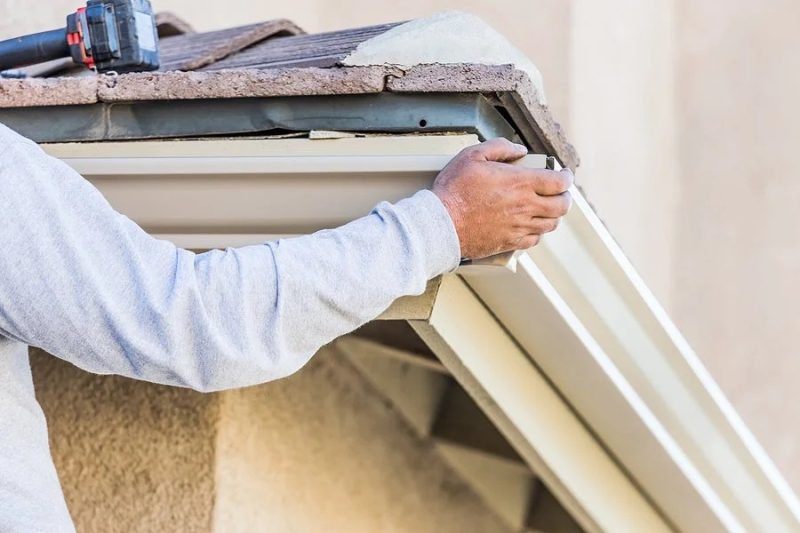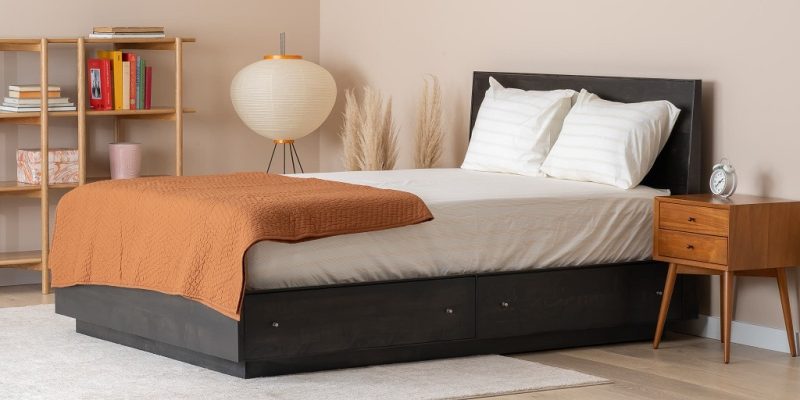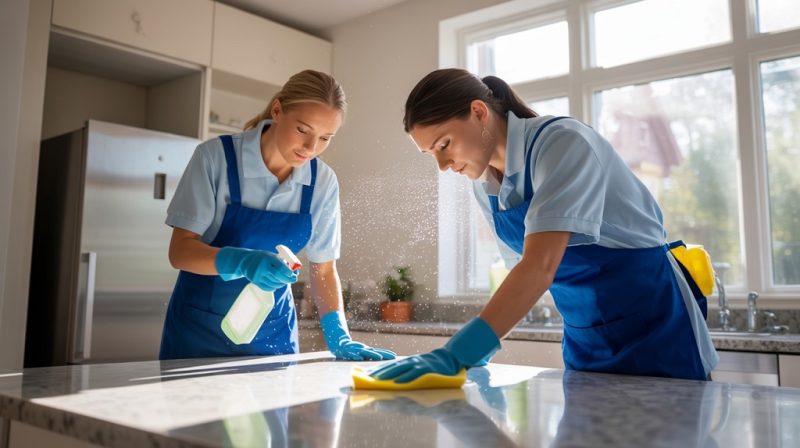The landscape of British garage doors is experiencing a remarkable transformation. Homeowners across the UK are embracing minimalist design principles while demanding maximum functionality from their garage installations. This shift represents more than just an aesthetic choice. It reflects a broader cultural movement toward simplified living and purposeful design.Continue reading →
From Smart to Sustainable: The Future of Garage Doors in the UK
Garage doors in the UK are evolving, blending smart technology with sustainable practices to meet modern homeowner needs. Once simple barriers, they now enhance energy efficiency, security, and curb appeal. This shift reflects growing environmental awareness and technological advancements. Homeowners seek eco-friendly materials and smart systems for convenience and cost savings. This blog explores how smart and sustainable garage doors are shaping the future, offering practical insights and innovative trends. Whether upgrading or building anew, understanding these developments helps make informed choices for a greener, smarter home. Join us as we dive into the exciting world of garage doors, where functionality meets sustainability.Continue reading →
Seamless Gutters: A Modern Solution for Efficient Rainwater Management
Rain pours. Your home stands strong. But is your gutter system ready? Seamless gutters revolutionize rainwater management for homeowners. They channel water away, protect your property, and boost curb appeal. Unlike traditional gutters, seamless designs offer sleek performance and durability. According to the U.S. Department of Energy, proper gutter systems reduce water damage by 30% in residential buildings. The National Association of Home Builders reports 85% of new homes now use seamless gutters for their efficiency. Ready to learn why? Let’s dive into this modern solution.Continue reading →
Transforming Your Home: Inspiring Kitchen Makeovers
A kitchen makeover is a thoughtful redesign or renovation of your kitchen space to enhance its functionality, aesthetics, and value. It can range from simple updates like repainting cabinets to full-scale remodels involving new appliances and layouts. Kitchens are the heart of the home, where meals are prepared, and memories are made. A well-executed makeover transforms this space into a hub of comfort and efficiency. Homeowners often pursue these projects to modernize outdated designs, improve workflow, or boost property value. According to a 2024 Remodeling Magazine report, minor kitchen remodels recoup about 81% of their cost at resale. Beyond financial benefits, a refreshed kitchen elevates daily living, making cooking and gatherings more enjoyable. Whether you’re tackling a DIY project or hiring professionals, understanding the process is key to success. This guide answers common questions about kitchen makeovers, offering practical insights and inspiration to help you create a space that reflects your style and needs.
Questions About Kitchen Makeovers Answered
What Is the First Step in Planning a Kitchen Makeover?
Snippet Answer: The first step in planning a kitchen makeover is assessing your needs, setting a budget, and defining your goals for functionality and style.
Starting a kitchen makeover can feel overwhelming, but a clear plan sets the foundation for success. Begin by evaluating how you use your kitchen. Do you need more counter space for meal prep? Are storage solutions lacking? Maybe the lighting feels dim, or the layout disrupts your workflow. Write down your pain points and priorities. Next, establish a realistic budget. According to HomeAdvisor, minor kitchen remodels in 2025 cost between $10,000 and $25,000, while major overhauls can exceed $50,000. Decide what’s non-negotiable—perhaps energy-efficient appliances or a spacious island—and allocate funds accordingly. Research design trends, like open shelving or matte black finishes, to align with your vision. Consider consulting a designer early to map out structural changes, especially if you’re reconfiguring the layout. Finally, gather inspiration from platforms like Pinterest or Houzz, but ensure your choices suit your home’s architecture and your lifestyle. A well-thought-out plan prevents costly mistakes and keeps the project on track.
How Can I Make My Kitchen Look Modern Without Breaking the Bank?
Snippet Answer: To modernize your kitchen affordably, update cabinet hardware, repaint walls, add open shelving, and install energy-efficient lighting.
Modernizing a kitchen doesn’t require a massive budget. Small changes can create a big impact. Start with cabinets—they’re a focal point. Swapping outdated knobs for sleek, minimalist hardware costs under $100 but instantly refreshes the space. Painting cabinets in neutral tones like white, gray, or navy adds a contemporary feel; expect to spend $200–$500 on paint and supplies for a DIY job. If cabinets are in good shape, refacing them with new doors or veneer is a cost-effective alternative to replacement, averaging $5,000 versus $15,000 for new ones. Open shelving, popular in 2025 designs, showcases stylish dishware and costs $100–$300 to install. Lighting is another game-changer. Swap old fixtures for LED pendants or under-cabinet lights to enhance ambiance and efficiency, with options starting at $50. Finally, consider peel-and-stick backsplash tiles for a trendy, renter-friendly update under $200. These tweaks prioritize aesthetics and function while keeping costs low.
What Are the Most Popular Kitchen Design Trends in 2025?
Snippet Answer: Popular 2025 kitchen trends include sustainable materials, bold colors, smart appliances, and mixed-metal finishes.
Kitchen design in 2025 blends innovation with personality. Sustainability leads the charge, with homeowners opting for recycled countertops, bamboo cabinetry, and energy-efficient appliances. Bold colors are making waves—think deep emerald cabinets or terracotta backsplashes—paired with natural wood tones for warmth. Smart technology is no longer a luxury; Wi-Fi-enabled ovens and voice-activated faucets streamline tasks, with brands like Samsung and Kohler leading the market. Mixed-metal finishes, such as brass handles with matte black fixtures, add visual interest without clutter. Open-concept layouts remain popular, especially for families who value shared spaces, with 68% of homeowners preferring them, per a 2024 National Association of Home Builders survey. Textured surfaces, like fluted glass or ribbed wood, add depth, while statement islands with waterfall edges elevate luxury. These trends balance form and function, letting you craft a space that’s both timeless and forward-thinking. Choose elements that resonate with your taste to avoid chasing fads.
How Do I Choose the Right Layout for My Kitchen Makeover?
Snippet Answer: Choose a kitchen layout based on space, workflow, and lifestyle, such as L-shaped for small spaces or U-shaped for ample storage.
The right kitchen layout optimizes space and efficiency. Common layouts include L-shaped, U-shaped, galley, and open-plan designs. L-shaped kitchens suit small to medium spaces, offering flexibility for a dining nook or island; they’re ideal if you want an open feel without major renovations. U-shaped layouts maximize storage and counter space, perfect for avid cooks, but require at least 10 feet of width to avoid feeling cramped. Galley kitchens, with parallel counters, work well in narrow spaces, streamlining workflow for solo cooks. Open-plan designs integrate the kitchen with living areas, great for entertaining but noisy without proper zoning. Assess your space’s dimensions and your cooking habits. For example, the “work triangle” (sink, stove, fridge) should have clear paths, ideally 4–9 feet apart, per NKBA guidelines. Test layouts with online tools like RoomSketcher to visualize flow. If moving plumbing or electrical is involved, consult a contractor to estimate costs, which can add $5,000–$15,000.
What Materials Should I Use for a Durable and Stylish Kitchen?
Snippet Answer: Opt for quartz or granite countertops, porcelain tiles, and hardwood or luxury vinyl flooring for durability and style.
Material choices define your kitchen’s longevity and look. For countertops, quartz and granite dominate due to their durability and low maintenance. Quartz resists stains and scratches, costing $50–$120 per square foot, while granite offers unique patterns for $40–$100. Porcelain or ceramic tiles are ideal for backsplashes, with endless patterns and colors; they’re water-resistant and start at $5 per square foot. For flooring, hardwood adds warmth and timeless appeal ($8–$15 per square foot), but luxury vinyl planks (LVP) mimic wood at $3–$7 per square foot with superior water resistance—key for spill-prone kitchens. Cabinets made of solid wood or plywood outlast particleboard, especially in humid climates, though they cost 20–30% more. Stainless steel or matte black appliances offer a sleek, modern vibe and resist fingerprints. Prioritize materials that balance durability with your aesthetic goals, and always request samples to test in your lighting conditions.
How Can I Maximize Storage in a Small Kitchen?
Snippet Answer: Maximize small kitchen storage with vertical shelving, pull-out cabinets, corner drawers, and multi-functional furniture.
Small kitchens demand creative storage solutions. Vertical space is your friend—install open shelves or tall cabinets to store less-used items like holiday platters. Pull-out cabinets and pantry organizers make accessing pots and spices easier, with brands like Rev-A-Shelf offering kits for $100–$400. Corner drawers or Lazy Susans turn awkward spaces into functional storage, maximizing every inch. Multi-functional furniture, like an island with built-in shelves or a foldable table, adds utility without clutter. Hooks and magnetic strips for knives and utensils free up drawer space; a set of magnetic racks costs under $30. Consider slim appliances, like 24-inch refrigerators, to save floor space. A 2024 Houzz study found that 43% of small kitchen renovations included custom storage solutions. Measure your space carefully and prioritize modular systems that adapt to your needs. Avoid overstuffing shelves, as it can make the space feel chaotic.
How Much Does a Kitchen Makeover Cost in 2025?
Snippet Answer: A kitchen makeover in 2025 costs $10,000–$25,000 for minor updates and $25,000–$50,000+ for major remodels, depending on materials and labor.
Costs vary widely based on scope, location, and material choices. Minor makeovers—think new paint, hardware, and lighting—range from $10,000 to $25,000, per HomeAdvisor’s 2025 data. Major remodels, including new cabinets, appliances, and flooring, start at $25,000 and can exceed $50,000 in high-cost areas like California. Custom features like islands or premium countertops drive prices higher. Labor typically accounts for 20–35% of the budget, with contractors charging $50–$150 per hour. DIY projects cut costs but require skill and time; for example, painting cabinets yourself saves $2,000–$5,000. Hidden expenses, like permits or unexpected plumbing issues, can add $1,000–$5,000, so build a 10–15% contingency into your budget. Get multiple quotes from contractors and prioritize quality over cheap materials to avoid costly repairs later. Financing options, like home equity loans, can spread costs over time.
How Long Does a Kitchen Makeover Take?
Snippet Answer: A kitchen makeover takes 2–6 weeks for minor updates and 3–6 months for major remodels, depending on scope and contractor availability.
Timelines depend on the project’s complexity. Minor updates, like painting or installing a backsplash, can wrap up in 2–6 weeks, especially if you’re DIY-ing. Major remodels, involving structural changes or custom cabinetry, take 3–6 months. Demolition and prep work alone can last 1–2 weeks, while cabinet installation takes 3–5 days. Custom elements, like handcrafted tiles, may delay completion due to production times. Supply chain issues, though less severe in 2025 than during the pandemic, can still cause delays for appliances or specialty materials. Hiring a reliable contractor with a clear schedule is crucial—delays often stem from poor coordination. If you’re living in the home during the remodel, set up a temporary kitchen to minimize disruption. Plan for inspections and permits, which can add 1–2 weeks in some municipalities. Clear communication with your team keeps the project on track.
Conclusion: Start Your Kitchen Makeover Journey Today
A kitchen makeover is more than a renovation—it’s an investment in your home and lifestyle. By addressing your needs, setting a realistic budget, and choosing timeless yet trendy designs, you can create a space that’s both functional and beautiful. Whether you’re refreshing cabinets or reimagining the layout, each decision shapes a kitchen that works for you. Don’t let the process intimidate you—start small, gather inspiration, and consult professionals when needed. Ready to transform your kitchen? Begin by assessing your space and exploring design ideas online. Visit platforms like Houzz or contact a local contractor for a consultation. Your dream kitchen is within reach—take the first step today!
Read More Also: Troubleshooting Push Pull Valve with Low Water Pressure
FAQ: Common Questions About Kitchen Makeovers
How Do I Find a Reliable Contractor for My Kitchen Makeover?
Snippet Answer: Find a reliable contractor by checking reviews, verifying licenses, and comparing at least three detailed quotes.
Research contractors on platforms like Angie’s List or Yelp, focusing on reviews with specific details about punctuality and quality. Verify their license and insurance through state boards. Ask for references and view past projects. Get at least three quotes, ensuring they include timelines and material costs.
Can I Live in My Home During a Kitchen Makeover?
Snippet Answer: Yes, you can live in your home during a kitchen makeover by setting up a temporary kitchen and planning for disruptions.
Create a temporary kitchen with a microwave, hot plate, and mini fridge in another room. Expect noise, dust, and limited access. Minor updates are less intrusive, while major remodels may require temporary relocation for comfort.
What Are the Best Colors for a Kitchen Makeover?
Snippet Answer: Best colors for 2025 kitchen makeovers include white, navy, emerald green, and warm neutrals like beige or taupe.
White remains timeless for cabinets and walls, creating a bright, airy feel. Navy and emerald add bold sophistication, while neutrals like taupe pair well with wood accents. Test samples in your lighting to ensure the color complements the space.
Should I DIY My Kitchen Makeover or Hire Professionals?
Snippet Answer: DIY minor tasks like painting or hardware swaps, but hire professionals for plumbing, electrical, or structural work.
DIY is cost-effective for simple updates if you have skills, saving $1,000–$5,000. Professionals ensure safety and quality for complex tasks like rewiring or installing gas lines, preventing costly mistakes.
How Do I Maintain My New Kitchen After a Makeover?
Snippet Answer: Maintain your new kitchen by cleaning surfaces regularly, sealing countertops, and checking appliances for wear.
Wipe cabinets and countertops weekly with mild cleaners. Seal granite or quartz countertops annually to prevent stains. Schedule appliance maintenance yearly and fix minor issues like loose hardware promptly to preserve the kitchen’s look and function.
Troubleshooting Push Pull Valve with Low Water Pressure
Low water pressure can turn simple daily tasks into frustrating experiences. When your push-pull valve isn’t delivering the water flow you need, it’s time to investigate the root cause. Professional plumbing solutions from companies like Think House Creative can help homeowners understand and resolve these common water pressure issues effectively.Continue reading →
Modern King Bedroom Sets: A Buyer’s Guide to Comfort and Style
What makes modern king bedroom sets so popular?
Modern king bedroom sets have become a favorite choice for homeowners who want to blend comfort with style. These sets usually include a king-sized bed, nightstands, dressers, and sometimes additional pieces like mirrors or benches. The appeal lies in their ability to provide a complete, coordinated look while offering the generous sleeping space that a king bed guarantees. With sleek lines, functional designs, and materials ranging from wood to upholstered finishes, they bring a balance of elegance and practicality to any home. If you’re planning to refresh your bedroom, understanding what to look for in a modern king bedroom set can help you make a smart investment that improves both comfort and aesthetics.Continue reading →
What Makes Modern Queen Bedroom Sets So Appealing?
Modern queen bedroom sets are designed to blend comfort, style, and practicality in one package. For many homeowners, the queen size strikes the perfect balance: it’s spacious enough for restful sleep yet doesn’t overwhelm most bedrooms. What makes them even more attractive is how affordable they’ve become, with plenty of options that look high-end without draining your budget. Whether you prefer minimalist lines, upholstered headboards, or storage-integrated frames, today’s market offers a wide range of designs to fit both your space and personal taste. In this guide, we’ll answer common questions about choosing, buying, and styling modern queen sets, while focusing on cost-effective solutions that elevate your home without overspending.Continue reading →
Top Office Renovation Trends in Dubai: Smart & Creative Solutions
In the heart of the Middle East’s business capital, Dubai’s corporate landscape is undergoing a revolutionary transformation. As companies race to attract top talent and boost productivity, office renovation has become more than just a cosmetic upgrade—it’s a strategic investment in the future of work. With Dubai’s ambitious vision to become the world’s smartest city by 2025, businesses are embracing cutting-edge renovation trends that blend technology, sustainability, and employee wellbeing in unprecedented ways.Continue reading →
Your Dream Home Awaits: Premier Kitchen and Bathroom Renovation Services
Premier kitchen and bathroom renovation services help homeowners create their dream spaces. These renovations boost home value while improving daily living comfort. Professional contractors deliver quality results that last for years.Continue reading →
Moving In or Out? Here’s Why You Need a Professional Cleaning Crew – Ensure a Spotless Transition
Picture this: You’ve just finished loading the last box into the moving truck, your back aches, and you’re exhausted from weeks of packing. Then you look around your old home and realize there’s still one massive task ahead—deep cleaning every inch of the property. Or perhaps you’re on the other end, stepping into your new home only to discover the previous owners left behind more than memories. Sound familiar? You’re not alone in this moving nightmare.Continue reading →









